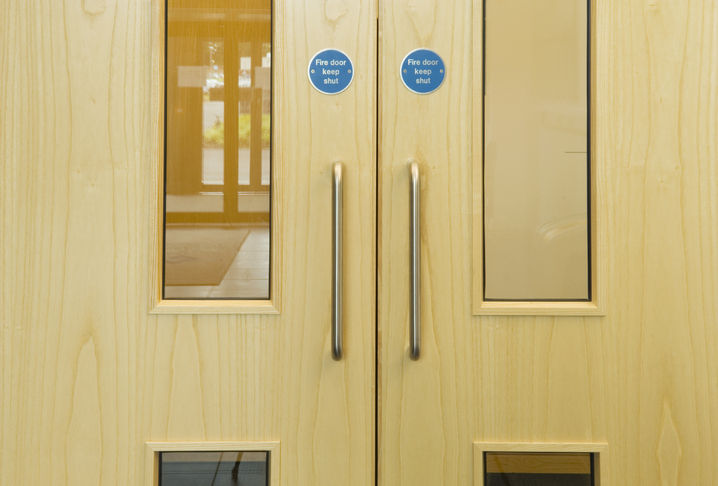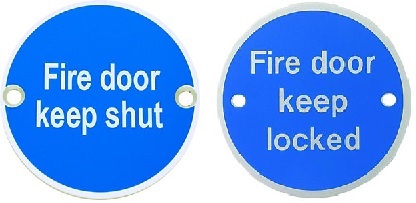Anatomy of a Fire Door
Reading time: 3 minutes
As well as having a door that has been fully tested, certificated and holds a fire rating of FD30, FD60 or in some cases FD120, to give a fire door its full integrity it needs the correct fire-rated ironmongery, seals and signage (if in a commercial setting).
- 1. Intumescent seals: intumescent strips are fixed all around the door frame and expand when exposed to heat. This provides an intumescent seal around the door, filling any gaps to help contain fire and smoke for a certain period of time.
- 2. Door closers: a fire door should remain closed when not in use. The use of door closers enables a fire door to automatically close after opening. Choosing the correct closing strength, in relation to the door’s weight, is an important factor that will ensure a smooth and easy open and close function.
- 3. Door leaf: a fire door leaf refers to the actual door itself. This is the main component in a fire doorset. All fire-rated doors should have an identification label which will identify the manufacturer, the fire-resistant time and ironmongery required, amongst other important information.
- 4. Threshold seal: a threshold seal or plate isn’t a necessity, but could give you added protection from cold smoke coming through the gap underneath a door. There are a few different types ranging from drop down, brush strip and rubber threshold seals.
- 5. Locks and latches: fire-rated hardware is needed to ensure the integrity of a fire door. Whether you use locks or latches for your doorset, either type will make sure that the door stays shut and remains an effective barrier.
- 6. Frame: a fire-rated door frame must be compatible with your chosen fire door leaf. If the frame is not fire-rated then your leaf cannot be classed as a fire door.
- 7. Hinges: generally 3 hinges are required for a fire door, and can be used with intumescent fire hinge plates for additional protection. Some fire-rated hinge sets may already come with protective plates.
- 8. Glazed vision panel and air transfer grille: glazed fire doors with a vision panel and / or air transfer grille are usually factory fitted complete with all of the correct components: fire-rated glass, intumescent system, glazing bead system and fixings as detailed on the fire door certificate.
An air transfer grille’s daily purpose is to allow a free-flowing circulation of air. In a fire, the intumescent element (in between the two grilles on either side of the door) expands - forming a solid block to inhibit smoke and fire spreading.
- 9. Letterplate: complete your fire door with an intumescent letterbox. The intumescent liner will expand when heat is detected to create a barrier that closes off the letterplate opening.
Fire door signage
Fire door signs play a pivotal role in fire safety. The most recognised is the circular, blue and white ‘Fire Door Keep Shut’, but depending on the situation of the doors and requirements outlined in your risk assessment, there are several other versions - albeit very similar in appearance. These types of safety signs are referred to as mandatory and give a clear indication to the reader of what action needs to be taken.
For further reading on fire safety signs, follow the link to the Health and Safety (Safety Signs and Signals) Regulations 1996.
Disclaimer: The information contained on this page is intended as an overall introduction and is not intended as specific advice from a qualified professional. Travis Perkins aims to avoid, but accepts no liability, in the case that any information stated is out of date.







